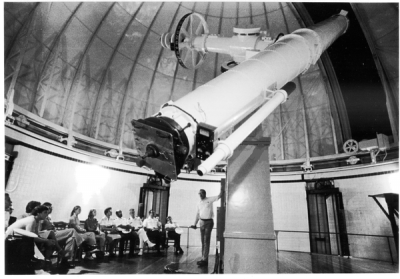
Perseverance pays! Maybe that was what the American astronomer, Asaph Hall, felt after he discovered the Martian moons in 1877!
Asaph Hall was just 33 years old when he joined the prestigious U.S. Naval Observatory (USNO) in Washington, D.C. in 1862 as an astronomer. Though the very next year he was made the Professor of Mathematics in the USNO, Hall retained an active interest in the study of planets, moons, stars and their orbits. The year 1877 brought Mars especially close to the Sun and the Earth in a rare phenomenon called the “perihelic opposition.” During this time, Hall was in charge of his observatory’s 26-inch refracting telescope (telescope that uses lens for magnification), the world’s largest during that time, and he decided to use it in his search for Martian moons.
Initially it must have been quite frustrating for Hall, because after catching a glimpse of what appeared to be a moon on the 10th of August he could not find it again. He was about to give up. But his wife, Angeline Stickney (who was also a mathematician), motivated him to keep trying. Finally on the night of 12 August 1877, Hall discovered Deimos, and on 18 August 1877, Phobos! The biggest feature on Phobos, a nine-kilometre-wide impact crater, was named “Stickney” in the light of Hall’s wife’s contribution to the discovery of the two Martian moons.
Picture Credit : Google




